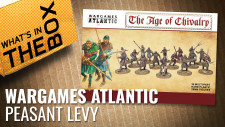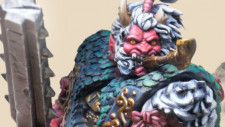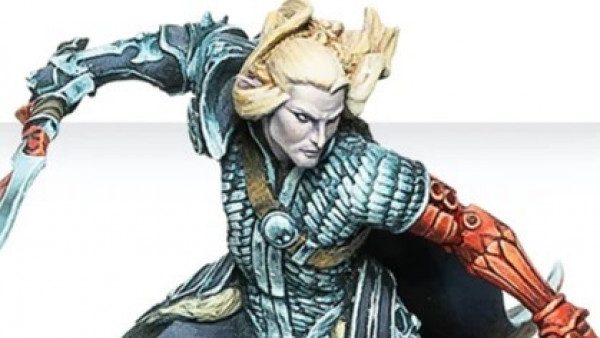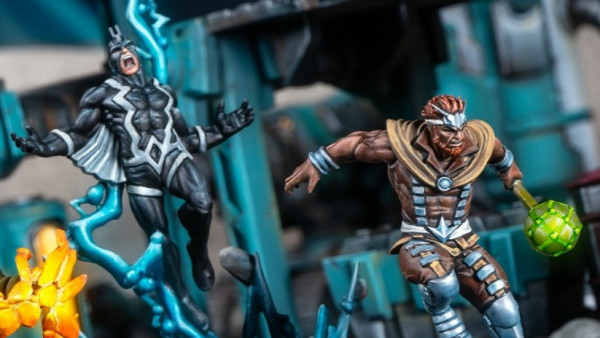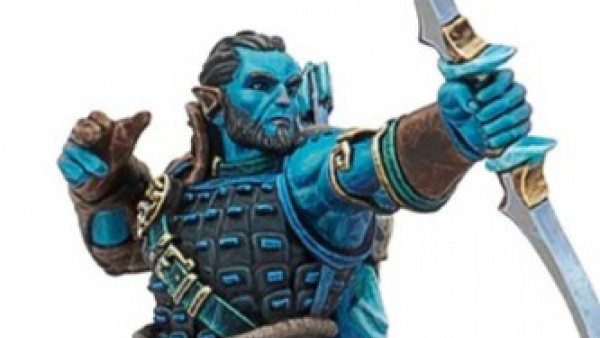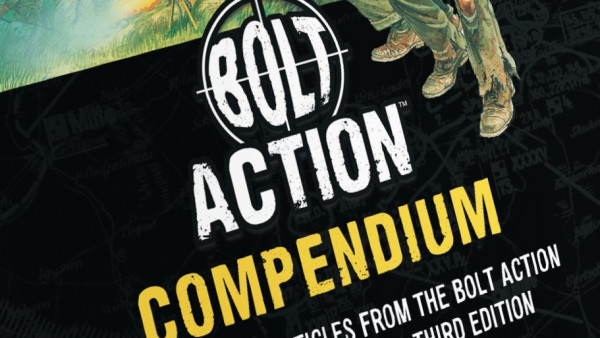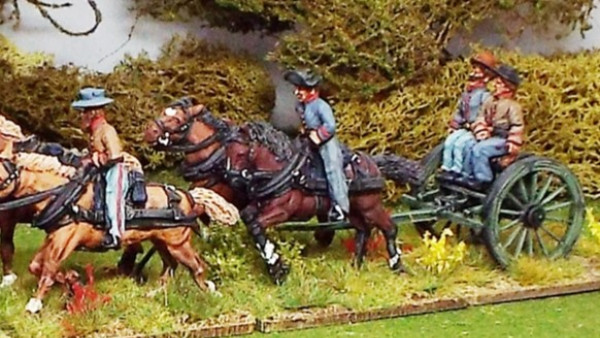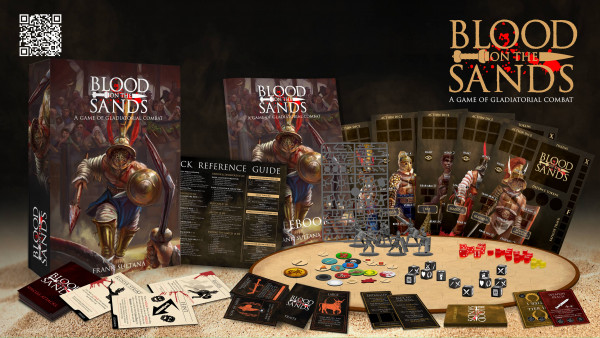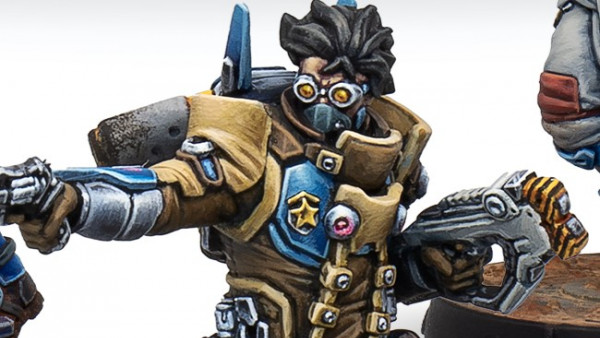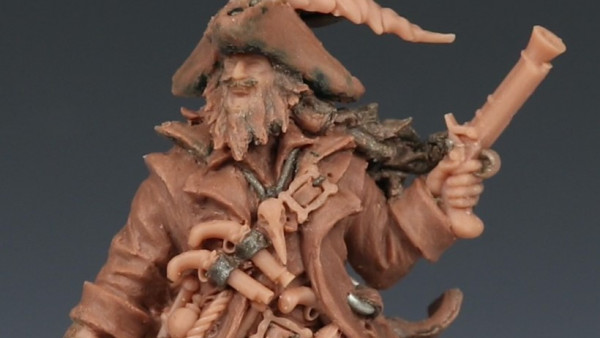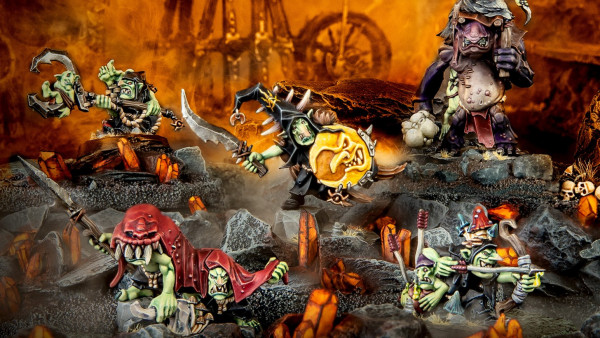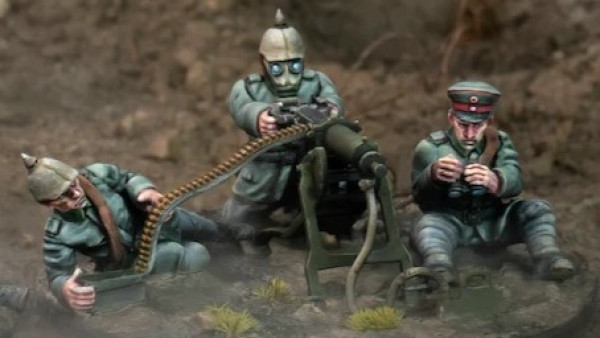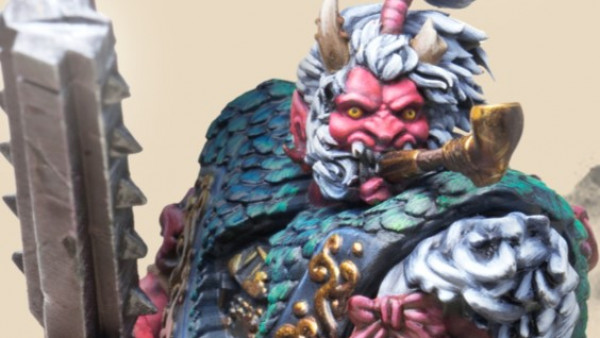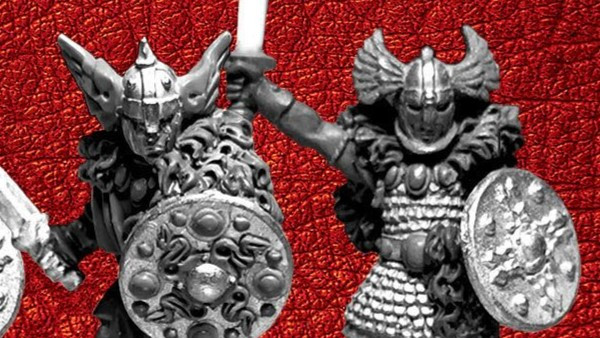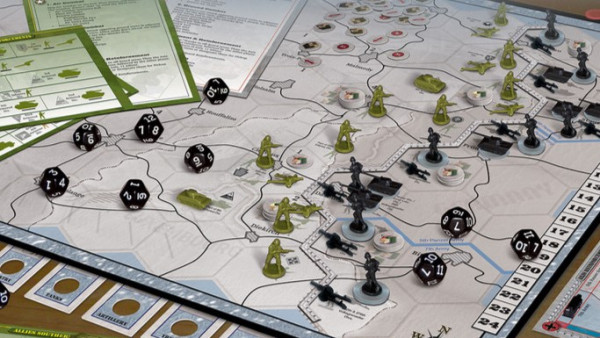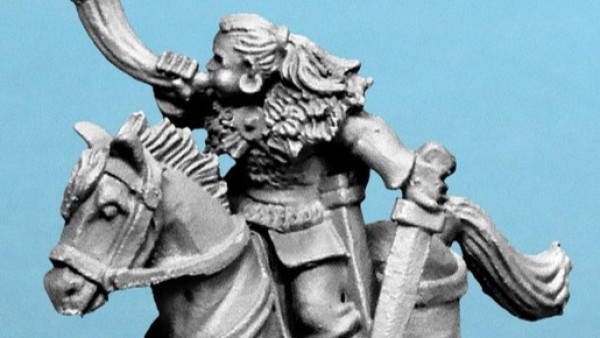Home › Forums › News, Rumours & General Discussion › SITREP Podcast Ops Center Series 2 finale
Tagged: Falklands war, modern wargaming, Sitrep podcast
This topic contains 10 replies, has 3 voices, and was last updated by ![]() oriskany 5 years, 7 months ago.
oriskany 5 years, 7 months ago.
-
AuthorPosts
-
June 6, 2019 at 2:00 pm #1400859
Hey everyone if you already haven’t done so, check out the Ops Center. Oriskany has done an incredible job on this series and even if modern gaming is not your forte the production quality and the story makes a great listen while hobbying.
June 6, 2019 at 2:57 pm #1400891I appreciate the support, @stvitusdancern . 🙂
June 6, 2019 at 6:08 pm #1400984Excellent series – thank you Oriskany.
I never knew that one of the Argentinien Type 42 Destroyers and the British HMS Sheffield were in fact sister ships.
A question: If all or much of the fighting on land was at night, to mitigate the lack of cover, would the British or Argentian forces have used any kind of early night optical devices?
Finally, I remember one of the justifications I heard during The Falklands War, was the concern of the British government about setting a negative precedent: if the UK would not or could not defend the Falklands, then Hong Kong might be next.
June 6, 2019 at 9:57 pm #1401043Thanks, @aztecjaguar – Great question actually. I don’t know how common it was, but it does look like night vision “starlight” scopes were used, at least by British snipers.
The first image was in the video, with what looks like a light amplification scope for the FN Fal. Another image seems to confirm that – both of these kit loadouts are from the Falklands
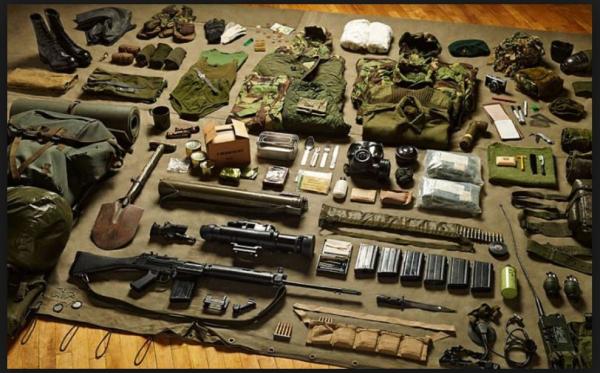

As far as NVGs go, British helo pilots first used night vision goggles in the Falklands, but to help fly SAS and SBS commandos to their targets at night. They were not used in “combat” per say, as the technology was brand new and not really trusted to the infantry at the time.
June 7, 2019 at 8:39 am #1401115Thank you @oriskany – the photos of the kit with the “starlight” scope are fascinating – I had kind of assumed that the British soldiers had pretty outdated equipment, given all the spending cuts on defence during the 1970s and 1980s, with priority given to the Tank Regiments in Germany, the Royal Air Force and the Polaris submarines.
I remember news report comparing the boots worn by the British and the Argentiniens – the professional elite British soldier had traditional leather combat boots which were not waterproof and so unsuited to the 50+ mile “yomps” across the rainy, cold and muddy East Falkland Island. The Argentinien conscripts, on the other hand, were fresh out of training and were equipped with modern light-weight waterproof boots. The conclusion, the Ministry of Defence needs to wake up and modernize their kit.
Actually, the difference in technology between the Falklands War and the 1st Gulf War only 8 years later does seem more like a 20 year difference (purely from a gut feeling, not based on any facts). Perhaps because new equipment like night optical devices, the guided missiles supplied by the US which you mentioned and rumors that the British were receiving intelligence gathered by US spy satellites, was probably all classified information at the time.
Perhaps also the sight of a rusty, about- to-be-scrapped, aircraft carrier hastily sent out as a part of the Task Force, and the story of the “1950s-era” Vulkan Bomber runs did not suggest “state-of-the art” war technology being available, but played to the British desire to take pride in our WW2 narrative of improvisation, pragmatism and “make do and mend” but tough-as-nails underdog character.
Perhaps there was some kind of a misdirection / propaganda strategy to allow the Argentiniens think they had the upper hand already and so hope they would not send further reinforcements from Argentina.
Interesting also that after the Falklands War, the British replaced the L1A1 SLR and Sterling SMGs with the Heckler & Koch SA-80.
Anyway, perhaps this a topic for discussion for another day: the advantages and disadvantages of
option 1 – appearing vulnerable by keeping strategic and/or tactical advantage secret
option 2 – overstating your strength and hope to intimidate the enemy into avoiding a confrontationI guess the answer will almost certainly be “depends on circumstances” but still, it might make for an interesting discussion.
June 7, 2019 at 4:49 pm #1401428No worries, @aztecjaguar –
Re: the scopes and the outdated state of British equipment: Well, it depends. Yes, spending for the British military was being drastically cut. But these particular units I believe were still pretty well-equipped for the time. In the video we list how elite these units were, these really were among the best of the best the British military had at the time. I wouldn’t expect their training, experience, or gear to be widely representative for the UK military as a whole. The 5th Infantry Brigade in particular was characterized as Britain’s “rapid reaction force” – and the 3rd Commando Brigade perhaps even moreso. Whether “line” units in commands like BAOR or even back in the UK would have the same level of equipment is highly suspect.
Argentinian kit: A lot of it was provided by the Americans before the war. Again, Latin and South America is an area of very sensitive interest to the US, and at the time the Soviets were making inroads in Central America, FARC leftists were on the rise in Colombia, and the War on Drugs was getting started in places like Colombia, Bolivia, and Peru. Long story short, we needed a lot of friends in the area, and sent them all kinds of gear. So yeah, things like boots, web gear, support weapons, all the way up A-4 Skyhawks, had come from the US in them id-and-late 70s.
But nothing terribly new. The British had all the American AIM-9L Sidewinders that enabled non-fighter Harrier strikes planes to compete (and trounce) dedicated air-superiority fighters like the Mirage III EA and Dagger (admittedly these were older aircraft, as well).
As far as infantry equipment, though, the Argentinians were still using the American WW2-era “piss-pot” helmet, in photos the British seem to be wearing their much newer Kevlar.
Did not know about the UK receiving US intelligence from American satellites. 😀
1991 Gulf War and 1982 Falklands War indeed sees some very big jumps. 1991 Gulf War is sometimes characterized as a Iraqi Industrial-Age army against a Coalition Information-Age army. Yes, the tactical gear and weapons and vehicles have changed a little. But what’s really changed are the “C-3” (Command, Control, Communications) infrastructure behind the armies and air forces – the first real use of GPS and this little thing we call the “internet” 😀 … of what Schwartzkopf called his “Jedi Knights.”
Those Vulcans indeed are an incredible story. Talk about “make do and mend.” 😀 Guys on the airfield had to cobble together improvised parts on the airfield out of what they could buy at the local hardware store to get the planes flying again. And while the Gulf War indeed seems a lot more impressive. We have to remember that that was built up from August 2 1990 to January 15, 1991. The Falklands War had to be launched basically over a long weekend.
I don’t think the Argentinians ever thought they had the upper hand or underestimated the threat coming at them ONCE the British force set sail. They of course totally misjudged whether a force WOULD set sail, but once underway they did not take the British lightly. Non-stop flights from the mainland ferried over troops to Las Islas Malvinas, including recalled reservists, in C130 Hercules, requisitioned Boeing 707s, and even Lear Jets. They got something like 15,000 troops in position. Again, the Argentinian economy was in shambles and they were also still involved in a civil war in the mountains of their own country.
June 7, 2019 at 5:52 pm #1401501@oriskany – thank you for the detailed answer. I did not know we Brits had modern kevlar combat helmet in the Falkslands – all I have ever seen are – daytime – photos of the Paratroop Regiment and Royal Marines in red and green berets respectively, Slow hiking or “yomping” across remote moorland with huge backpacks of Heavy Equipment – towards an entrenched more modern looking enemy.
As a 15 year old, at the time, I had absolutely no real concept of military tactics – but I remember thinking “why no camouflaged helmet?” And “why did they not bring any jeeps?”
Now I realise, that since the battles took place under cover of darkness, they probably just put their kevlar helmets on beforehand – duh!
And know I now: the helicopter transports (helps being quicker than Jeeps) had all been lost in the Atlantic Conveyor – apparently due to an exocet fired at a British Destroyer but which was misdirected by “chaff” and then locked itself on the next available target – the Atlantic Conveyor. As this was a conmercial freighter, it had no “chaff” or point defences to speak of and so got hit by “bad luck”.
June 7, 2019 at 7:56 pm #1401651@aztecjaguar – Yeah, I ran into the same questions re: headgear when making Valor & Victory game pieces for the Falklands War. You have red berets for paras, green (with different unit inisgnia, obviously) for the Royal Marine Commandos – sort of a sandy beige for the Scots Guards – not sure about the Welsh Guards – and also not 100% certain on the 1/7th Gurkha Rifles. But in many cases the British seemed to be wearing standard helmets. Although most photos have a mix.
I have a feeling they wore the helmets in night combat as you suggest, and then the berets for the cameras. 😀
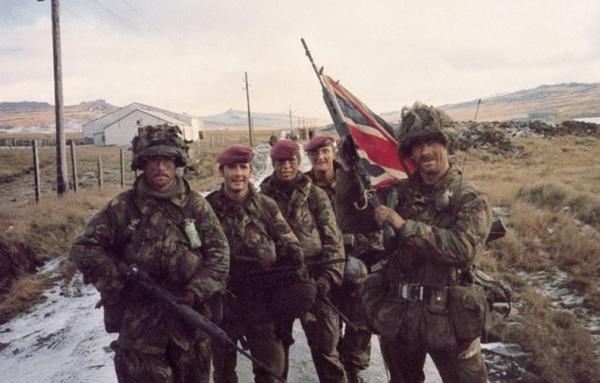
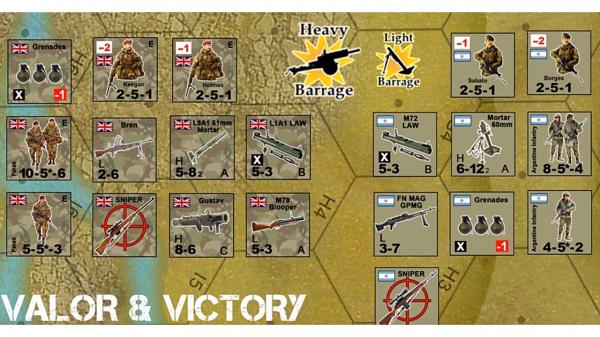
And yes, I admit the graphics on those Mk 67 frag grenades for the British are wrong. 🙁 Those should be L2A2.
Funny, we were just talking about the chaff on the British warships that led to the Exocet strike on the Atlantic Conveyor on the thread for the video. But long story short, yes, you’re right, I 100% agree. 😀
June 7, 2019 at 9:17 pm #1401721Oh, I did not realise there is another Thread about this Episode of SitRep. Will go over and check it out now – sorry if I have inadvertently asked the same questions and/or raised the same issues on this Thread.
PS the photo of the soldiers with mix of kevlar helmets and Red para berets brings me to another question – why is it that so many soldiers do not appear to bother doing up the chin-straps? In every war film it seem they are always flapping about and being a distraction. I wonder if this is Hollywood “rule of cool” or something that real soldiers in a Battle just can’t actually be bothered with and films are being accurate about this detail.
June 7, 2019 at 10:27 pm #1401752Deleted – double post.
June 8, 2019 at 3:00 am #1401886Absolutely no worries, @aztecjaguar – as far as the chinstraps go, I just know that the ones we had were friggin’ annoying. They never quite fit right, and so were always chafing against your face. Also, there is webbing inside the helmet so it’s not resting directly on your scalp. This makes it better to wear on your head, but that freedom of movement also means that friggin’ chin strap is always yanking on your face when moving. Unbuckling one side was almost worse because now it was always flapping against your cheek.
You could unsnap both sides and just take it off altogether, always the preferred option at least when the NCOs weren’t looking.
The one exception was for any kind of PT (physical training) in field gear. Running, calisthenics, obstacle courses, etc … it was useful to have the chinstrap fastened then. Nothing is worse than finishing a course only to have to go back and do it all over again because you lost your helmet along the way somewhere.
-
AuthorPosts
You must be logged in to reply to this topic.





























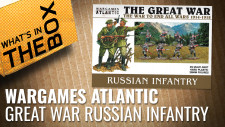



![TerrainFest 2024! Build Terrain With OnTableTop & Win A £300 Prize [Extended!]](https://images.beastsofwar.com/2024/10/TerrainFEST-2024-Social-Media-Post-Square-225-127.jpg)
